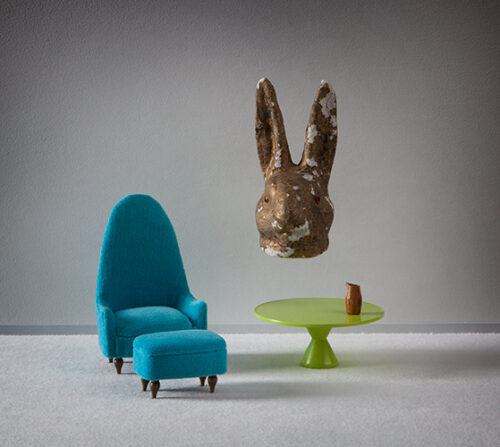Artists featured in the monthly Member Spotlight are selected from our online Members' Gallery. If you wish to be considered for the Spotlight in the future, send us a note!
Kelly Wrage
Member Spotlight - July 2020
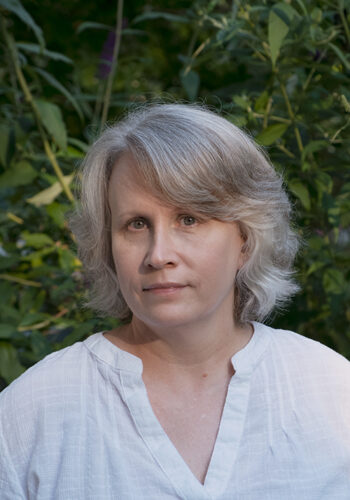
- Where did you grow up, and where do you live now?
I grew up in Southern California next door to Knott’s Berry Farm in Buena Park, California. It was fun living so close to an amusement park, and as kids, my friends and I would often visit the areas of the park that were free or cost very little to get into. We could play in a fantasy land, and the fireworks were free.
I moved to Staten Island, New York when I was twenty and have remained in the Northeast because I love the vibrancy of the urban areas and the change of seasons. My husband and I have been married for nearly 30 years, and we love to create art, both together and in our separate endeavors. We currently reside in the suburbs south of Philadelphia but will be moving up to New England soon.
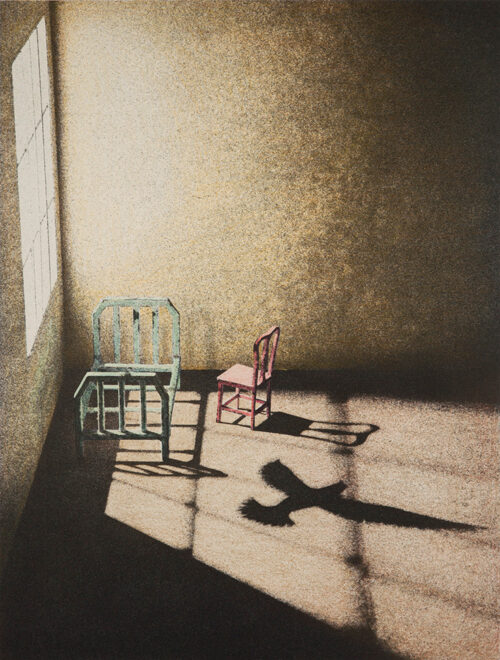
- Why did you join TPS?
TPS has long been respected by photographers and artists, including friends and other creative people. I look up to TPS because of its continued involvement in the photographic arts and its support of photographers. I first joined several years ago, and somehow allowed my membership to lapse! It wasn’t until I went to submit images to a call for work that I realized what had happened and I got back in the fold. Thank heavens for extended memberships…
- Why did you become a photographer? / What do you like about photography?
I first started taking pictures when I was a kid, frequently using my parents’ little 35mm instant camera to take pictures of siblings, friends, pets, etc. In high school I took a photography class and was introduced to the darkroom and processing my own film and prints. It was magical, but I was more seduced by drawing and painting than I was to photography when I was younger. I went back to art school for fine art studies when I was in my forties and thought that taking photography classes would help me get my head away from the rigors of drawing and painting with something that was very different.
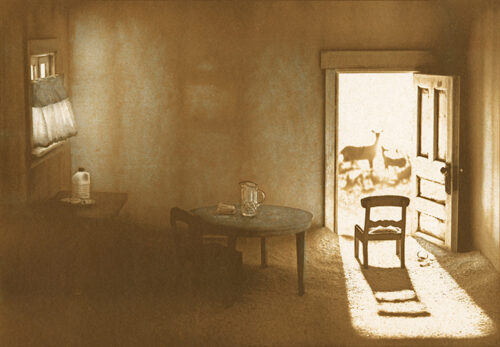
I was a little surprised when I realized that photography felt like the greater challenge for me. Not that drawing and painting skills come easily, because they don’t, but they never scared me the way that photography did. I found myself, an artist drawn to fantasy and surrealism, faced with the challenge of being creative with a medium that I had always found firmly grounded in the literal and the real. I ended up with an associate’s degree in fine art and an undergrad degree in photography as a result. I love the continued challenges that photography presents with regard to individual artistic expression.
- Where or from whom do you find inspiration or motivation for your work? / Do you have a mentor?
I am most interested in imagery that is unexpected or is of subject matter that tends to be easily overlooked, so inspiration can come from anywhere, really—a dead fly on a windowsill, raking light on plants in the deep woods, wear and tear on the surfaces of an old home, for instance, but most inspiration for me comes from stories. These stories can come straight from the daily news, books, TV, film, or from conversations with people.
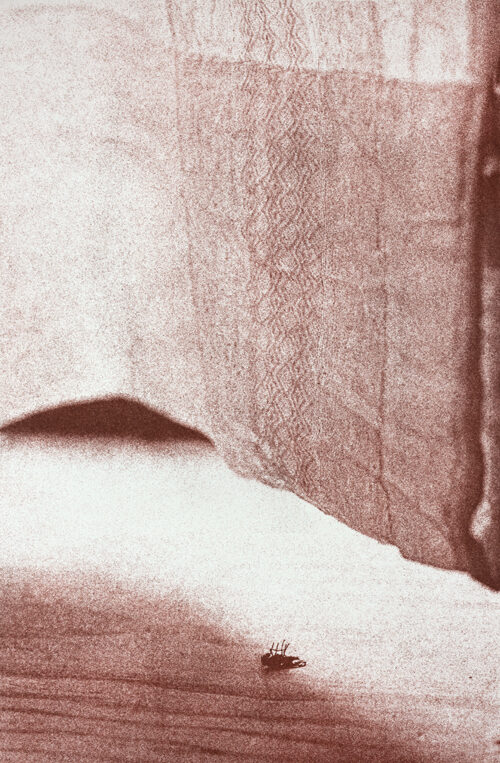
Gregory Crewdson’s work was quite inspiring to me when I first started making pictures using scenery I created myself. The dramatic lighting he uses and surreal feel of each scene drew me to (and into) his imagery. Robert and Shana ParkeHarrison, Pinky Bass, Sally Mann and Keith Carter are great sources of inspiration, but there are so many from so many other mediums…Joseph Cornell…René Magritte…
If I were to name anyone as a mentor, it would have to be Christopher James. His commitment to creative expression and learning have been there pushing me along for quite a few years now. I doubt I’d be the artist I am today without his influence.
- How would you describe your photography and/or working process?
I enjoy taking what might be considered banal subject matter and showing what could be more deeply understood about that particular situation and portray it in some unexpected way. Sometimes it’s humorous, and other times it can appear nostalgic, wistful, or melancholy. I frequently find myself looking to the past in an effort to make sense of something—a time, a place, a happening of some sort, or to perhaps even reinvent an unfortunate situation from my own life, giving it a better outcome.
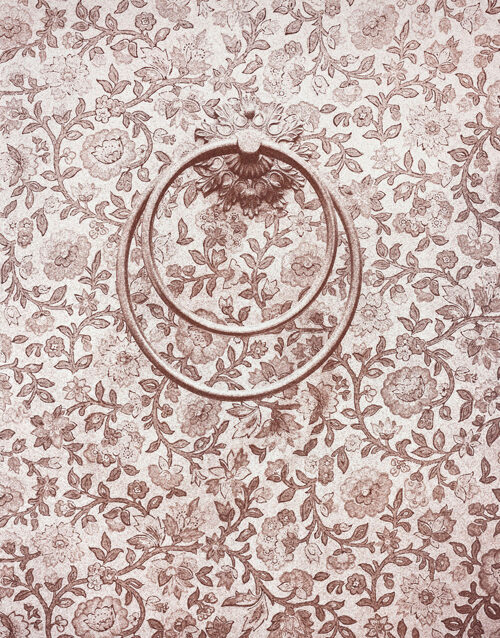
I usually work in alternative processes like gumoil, gum bichromate, casein bichromate, and wet plate collodion, but there are some instances where I have printed digital imagery via inkjet. It seems that everything I do involves a type of lengthy process, and I always seem to be tinkering away on something.
- What work are you most proud of?
I feel a sense of pride about any work I’ve done well. I have done a lot of work with the gumoil process, refining things a little bit here and there, and I have managed to help quite a few people with that process along the way. I have written fairly extensively about it, and that work continues. It is something I am quite proud of.
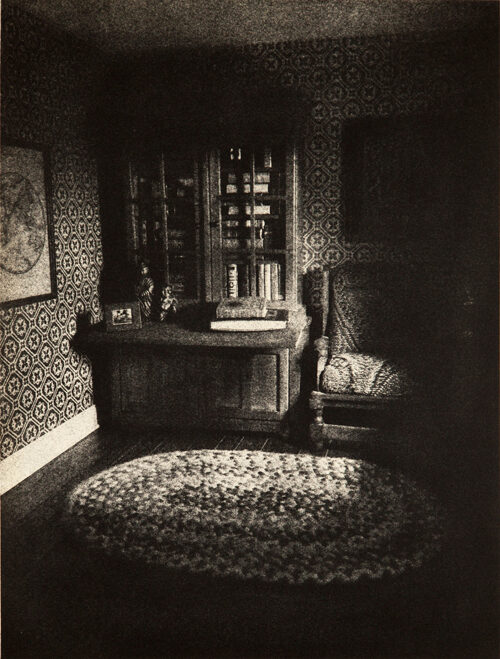
- Please tell us about your most recent photographic project or body of work.
Although this series, American Dreaming, isn’t necessarily my most recent work, it is one that I find myself going back to over and over again, so it’s always current in that sense.
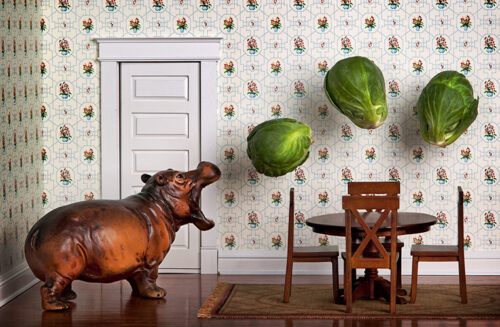
I have always been fascinated by miniature scenes, and as a kid I was always creating them, often with sticks and weeds to stand in for full scale plants and other scenery and little characters made from modeling clay. In my mind, they were very realistic, and I enjoyed creating little stories to go along with them.
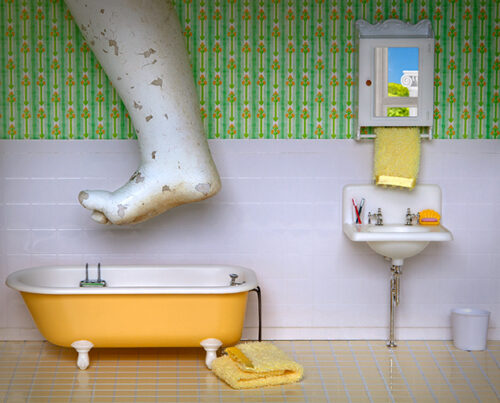
I use dollhouse furnishings in this series with no apologies for the lack of realism. Dollhouses, or some version of them, have a very long history and have been used for thousands of years. In contemporary times dollhouses were made for imaginary play of life at home. A dream, a storybook. As adults, we realize there is no such thing, and I try to convey that in my little set-ups. I create small tableaus that are combinations of the real and the fantasy, the childlike play and the adult reality.
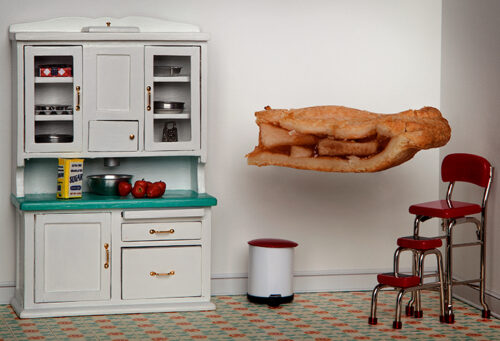
I celebrate kitsch and other home décor trends that, while in their heyday might have been cheerful and uplifting, in the long run were frequently considered unattractive and were eventually torn out and replaced with some new design trend. These old décor trends are easily recognized by most Americans and tend to evoke memories of a personal experience, place, or person. I play with the notions of various types of daily life that might have happened within a real version of a particular room in an American home, including life-sized objects that seem to appear out of one’s imagination, a sort of adult reality finding its way into the dollhouse scene.
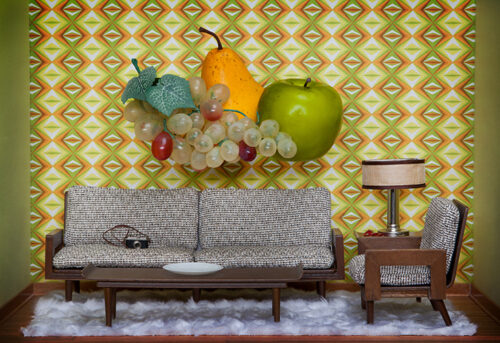
I am always searching for new ways to explore ideas of what “home” means to me and how home is affected by the outside world, or, how the world itself is affected by the people living in it. If I’m not photographing something related to home, I will almost certainly be photographing something related to nature and the earth--all things I find precious and that I fear could be slipping away.
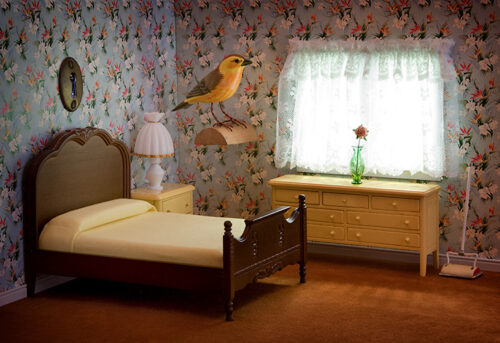
My American Dreaming project was originally created with the gum bichromate process in mind for printing, but when I saw the images on my screen for the first time after shooting the little scenes, I didn’t like the idea of losing any details to the softness that gum printing lends to an image. As a result, I found myself printing most of these images with an archival quality inkjet printer when I first started showing the project. Now, the method I choose to print an image with depends on the mood I am trying to convey, but it’s almost always some sort of alternative process. There are so many options there for creative expression!
